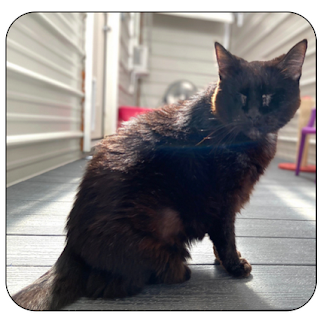Feline Pancreatitis - What You Need to Know
Have you heard of feline pancreatitis? It's a pretty common condition in cats today but it used to be less diagnosed. With improved modern testing available, veterinarians are better able to diagnose it now and it seems to be most common in cats older than seven. BCR's
The pancreas in cats has two major functions, regulating blood sugar levels and making the enzymes that break down food in the stomach. When they become inflamed and stop working they can cause life-threatening problems for cats. Pancreatitis can be a short term, or acute, problem, or it could be a chronic condition that needs ongoing treatment. Despite lots of research on what causes pancreatitis, no one can land on a specific cause, which is the case for 95% of cases diagnosed. It can be triggered by an infectious disease or from another existing condition like intestinal or gallbladder disease, and diabetes.
A cat with pancreatitis may show these symptoms, listed by pets.webmd.com:
Loss of appetite
Lack of energy
Vomiting
Yellow eyes and gums
Fever
Belly pain
Weight loss
Dehydration
Diarrhea
In severe cases, pancreatitis can cause shock and sudden death.
The challenge for veterinarians is that these symptoms are also common to other feline health problems and can look like another problem altogether. To make sure they're dealing with pancreatitis, the vet will need to do several things. Taking a look at your cat's health history is the starting point to see what, if anything, might already be happening to contribute to pancreatitis. A thorough exam will include blood tests to look for changes in the kidneys and liver enzymes, and, if necessary, an ultrasound or X-ray.
Since many of the symptoms listed above can also be found in other diseases, the vet will likely do a feline pancreatic lipase immunoreactivity (fPLI) test, which looks for results that are directly related to pancreatic inflammation. There are two versions of this test, one called a SNAP fPL test, that gives same-day results, and a second one, Spec fPL, that goes to a lab for results and takes longer. These tests are the most useful in diagnosing pancreatitis. Finally, if it's called for, the vet may also do a biopsy of the pancreas, which amounts to a surgical procedure, so is not too often recommended.
Once a diagnosis is made, the vet will focus on treating the symptoms a cat is experiencing since there isn't a specific medication that can cure pancreatitis. These four areas are are dehydration, nausea, pain and nutrition. Depending on how severe the pancreatitis is, these management treatments can be done at home but cat parents will need to closely monitor how their cats are eating and drinking water, keeping food down and to watch for signs of pain or distress. The vet may also want to change the cat's diet to lower-fat food and treats.
Pancreatitis is treatable but it's tricky and often connected to other conditions, so cat parents really need to be watchful and make sure their cats have regular vet visits and blood work.
CLICK HERE for a detailed medical review of pancreatitis from Cornell University's vet school.
CLICK HERE for an overview of pancreatitis and it's treatment from pet.webmd.com



Comments
Post a Comment